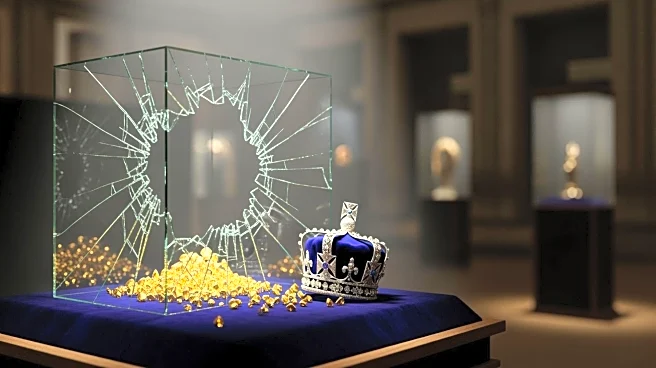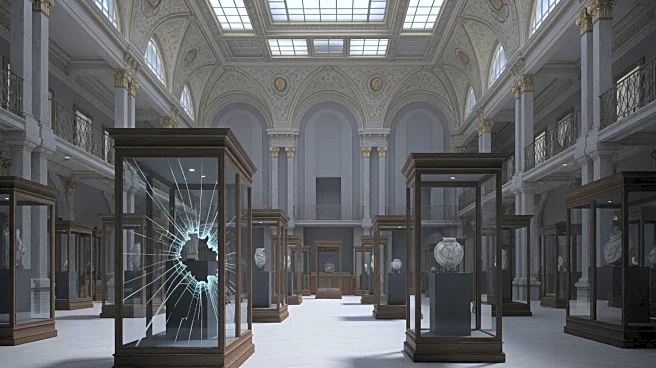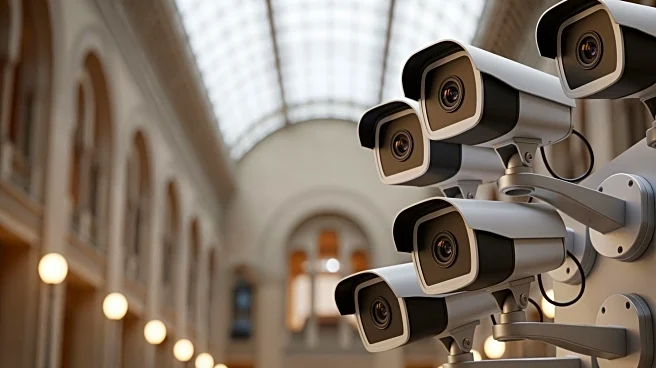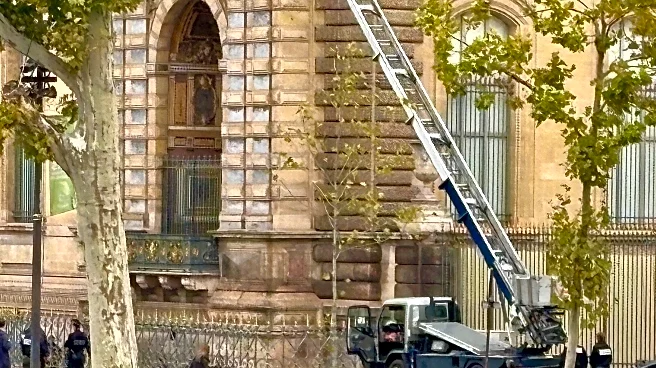What's Happening?
In a swift and audacious heist, four suspects stole nine pieces of France's crown jewels from the Louvre Museum in just seven minutes. The thieves used a truck-mounted basket lift to access the Galerie
d’Apollon, slicing through a window with cutting tools. They threatened museum staff with angle-grinders and smashed display cases, taking necklaces, tiaras, and brooches. Despite leaving behind the 140-carat Regent diamond, valued at $60 million, the thieves made off on scooters, dropping two items, including the Crown of Empress Eugénie. The incident has prompted a national outcry, with French President Emmanuel Macron calling it an attack on cherished heritage.
Why It's Important?
The theft represents a significant cultural loss for France, as the stolen items are of immense historical value, linked to figures such as Napoleon's wives. The incident has sparked national outrage and embarrassment, highlighting vulnerabilities in the security of cultural institutions. The heist has also raised concerns about the adequacy of security measures at the Louvre, which is the world's most visited museum. The theft could impact France's reputation for safeguarding its cultural heritage and may lead to increased scrutiny and pressure on museum officials to enhance security protocols.
What's Next?
French authorities are under pressure to recover the stolen jewels and apprehend the perpetrators. The investigation involves a team of 60 investigators, and there is speculation about foreign organized crime involvement. The government is likely to face calls for immediate security upgrades at cultural sites across the country. The incident may also prompt discussions on the allocation of resources for museum security and the need for technological advancements to prevent similar occurrences in the future.
Beyond the Headlines
The heist has broader implications for the security of cultural heritage worldwide, emphasizing the need for international cooperation in protecting valuable artifacts. It also raises ethical questions about the commercialization of stolen cultural property and the role of private collectors in facilitating such crimes. The incident may lead to a reevaluation of security strategies in museums globally, considering the evolving tactics of criminal organizations.












